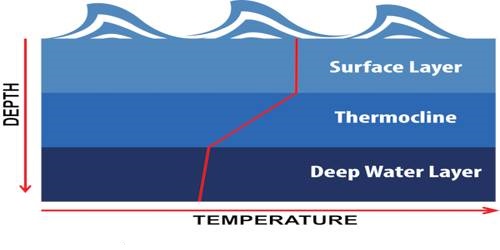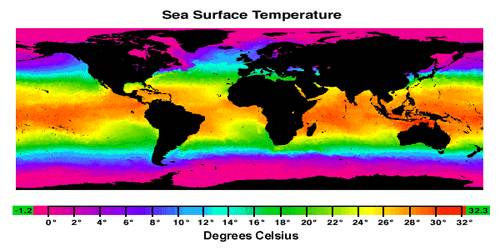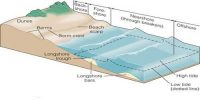The temperature of Ocean Waters
The temperature of ocean water varies by location – both in terms of latitude and from top to bottom, due to variations in solar radiation and the physical properties of water. Ocean waters get heated up by the solar energy just as land. The process of heating and cooling of the oceanic water is slower than land.

Factors Affecting Temperature Distribution
The factors which affect the distribution of temperature of ocean water are:
(i) Latitude: the temperature of surface water decreases from the equator towards the poles because the amount of insolation decreases poleward.
(ii) Unequal distribution of land and water: the oceans in the northern hemisphere receive more heat due to their contact with the larger extent of land than the oceans in the southern hemisphere.
(iii) Prevailing wind: the winds blowing from the land towards the oceans drive warm surface water away from the coast resulting in the upwelling of cold water from below. It results in the longitudinal variation in the temperature. Contrary to this, the onshore winds pile up warm water near the coast and this raises the temperature.
(iv) Ocean currents: warm ocean currents raise the temperature in cold areas while the cold currents decrease the temperature in warm ocean areas. Gulf stream (warm current) raises the temperature near the eastern coast of North America and the West Coast of Europe while the Labrador current (cold current) lowers the temperature near the north-east coast of North America.
All these factors influence the temperature of the ocean currents locally. The enclosed seas in the low latitudes record relatively higher temperature than the open seas; whereas the enclosed seas in the high latitudes have the lower temperature than the open seas.














